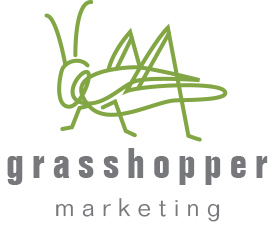10 Jan Content Marketing Strategies for Small Business Owners
Every where you turn, you read about content marketing. But what is it, exactly? And how do you get some? I mean, you’re a small business owner and you want to drive traffic to your website and you’re open to typing out some words to draw in your target audience (and maybe some people outside your target), but where do you start? Here are a few things to keep in mind as you get started.
Strategy 1 - Remember, your marketing presence is everywhere.
Marketing includes every single contact with a prospect, customer or partner. It’s how you answer the phone, your employees’ clothes, your parking lot, your lobby — as well as the actual service you provide. Make sure everything your customers and prospects see instills complete confidence in your ability to solve their problems.
Strategy 2 - Put calls-to-action everywhere.
Everywhere. On every blog post you publish, every web page you create, in webinars, speaking presentations, flyers, within downloadable content like eBooks, on your social media pages … what have I missed? Don’t go through the work of designing attractive CTAs for your marketing offers if you’re only going to use them on a few pieces of collateral. Tell people what to do after they read your website page or listen to your live talk. What do you want them to do? Call you? Buy something? Download more content. Tell them and gently guide them through your sales process.
Strategy 3 - Give away downloadable information.
Write an eBook (otherwise known as a PDF with a several pages of information) with valuable tips and have a free download link on your website. Most people will happily give you an email address in exchange for relevant information that can help them or teach them something new. Send it to prospects and partners, too.
Allow and encourage people to give away your free information to their friends. Then their friends will also give it away. This will continue to spread your expertise and reputation. There is no more valuable advertising than word of mouth, and the web makes it infinitely scalable with little more than consistent effort to get your word out through all your happy customers.
Strategy 4 - Search and use proper keywords or keyword phrases for your site’s content.
Search engines look for certain keywords they should show in their results page. So determining the right keyword and keyword phrases is a crucial requirement in ranking high in search engine results. Google’s Keyword Tool is a great place to start.
Don’t let this tool intimidate you. It looks complicated, but it’s actually rather simple at its core. You enter search phrases you want to analyze, click search, and it returns a long list of those and similar phrases, with details on competition levels (for getting into the top of the first page of search results) and monthly search volumes. This allows you to find phrases with LOWER competition and HIGHER search volumes. Get it? The tool can do so much more, so if you learn more techniques over time, your ability to target keywords will skyrocket.
Strategy 5 - Write articles that leads traffic to your site.
After researching and deciding on the right keywords for your target market audience, write articles using your targeted long-tail keywords for your own site/blog. Submit the articles to other websites that contain subject matter relevant to your services. Attach your site description and services at the end of the article as well as a link back to your the site.
Write your articles with unbiased tones. Your goal should NOT be to sell directly, but to promote yourself as an industry expert or thought leader. So when you do try to promote your products, the attempt has a greater chance of being considered unbiased by your target audience.
Write and submit articles to:
- Your own blog
- Local and online magazines
- Neighborhood newspapers
Strategy 6 - Update and re-publish outdated content.
Content on your website/blog continues to generate traffic, leads, and inbound links for your website over time, and it doesn’t expire. But that content tends to become stale over time and could use periodic tune ups. You can also customize content received from the corporate office. This takes much less time than creating original content, and it tells observant members of your target audience that your center is thorough and dedicated to the details.
There’s absolutely nothing wrong with updating and re-publishing some of your content as new (remember to change the time-stamp for blog posts, to avoid being treated as duplicate content by search engine algorithms). You’ll save the time you would’ve spent creating a brand new blog post/eBook/webinar from scratch, and your older content will become more relevant to a new audience.
Want to learn more about marketing? See our Resources page here.


